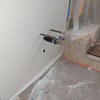flex gas line to water heater?
homebound
16 years ago
Related Stories

GREAT HOME PROJECTSHow to Switch to a Tankless Water Heater
New project for a new year: Swap your conventional heater for an energy-saving model — and don’t be fooled by misinformation
Full Story
GREAT HOME PROJECTSHow to Add a Solar Water Heater
Lower energy bills without a major renovation by putting the sun to work heating your home’s water
Full Story
SAVING WATER11 Ways to Save Water at Home
Whether you live in a drought-stricken area or just want to help preserve a precious resource, here are things you can do to use less water
Full Story
GREEN BUILDINGWater Sense for Big Savings
Keep dollars in your pocket and preserve a precious resource with these easy DIY strategies
Full Story
GREEN DECORATINGEasy Green: Big and Small Ways to Be More Water-Wise at Home
These 20 tips can help us all make the best use of a precious resource. How do you save water in summer?
Full Story
HEALTHY HOMEHow to Choose a Home Water Filtering System
Learn which water purification method is best for your house, from pitchers to whole-house setups
Full Story
DISASTER PREP & RECOVERYRemodeling After Water Damage: Tips From a Homeowner Who Did It
Learn the crucial steps and coping mechanisms that can help when flooding strikes your home
Full Story
HOUSEKEEPING5 Steps to Improve Your Heating System Now
Increase your heater's efficiency and safety for lower energy bills and greater peace of mind this winter
Full Story
PRODUCT PICKSGuest Picks: Set Up an Outdoor Living Room
With an outdoor movie screen, a patio heater or fan, and scads of entertaining essentials, you may never want to go back inside
Full Story
LIVING ROOMSHow to Convert Your Wood-Burning Fireplace
Learn about inserts and other options for switching your fireplace from wood to gas or electric
Full StoryMore Discussions








lazypup
homeboundOriginal Author
Related Professionals
Grain Valley Kitchen & Bathroom Remodelers · Holden Kitchen & Bathroom Remodelers · 93927 Kitchen & Bathroom Remodelers · Alpine Kitchen & Bathroom Remodelers · Boca Raton Kitchen & Bathroom Remodelers · Buffalo Grove Kitchen & Bathroom Remodelers · Elk Grove Kitchen & Bathroom Remodelers · Hoffman Estates Kitchen & Bathroom Remodelers · New Port Richey East Kitchen & Bathroom Remodelers · South Plainfield Kitchen & Bathroom Remodelers · Vista Kitchen & Bathroom Remodelers · Waukegan Kitchen & Bathroom Remodelers · Eufaula Kitchen & Bathroom Remodelers · Wellesley Kitchen & Bath Fixtures · Hewitt Kitchen & Bath FixtureshomeboundOriginal Author
lazypup